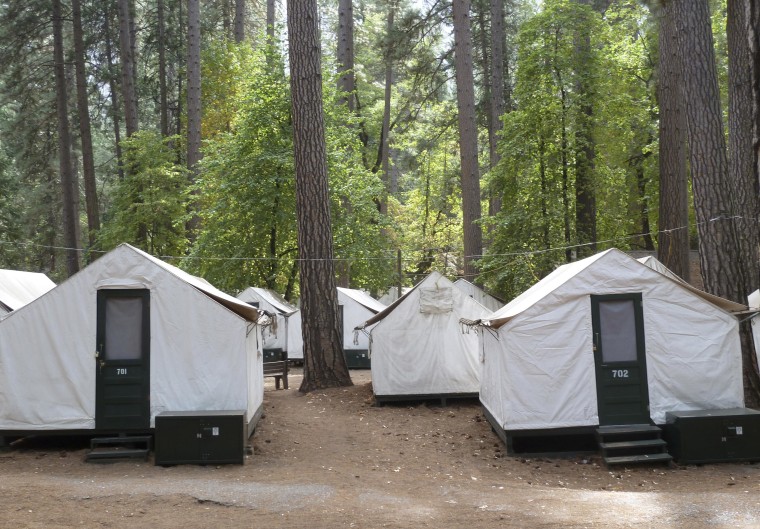Cozy foam insulation that attracted nesting mice is likely to blame for an outbreak of hantavirus that sickened at least 10 campers and killed three of them in 2012, California health officials said Wednesday.
The mice carried the virus into the tents and infected campers staying there, the new report in the journal Emerging Infectious Diseases finds.
Park staff have since dismantled the “signature” cabins and rodent-proofed other facilities, according to the Yosemite Hantavirus Outbreak Investigation Team report.
The cabins “differ from regular tent cabins by having an interior wall and roof consisting of drywall with a layer of foam insulation between the drywall and exterior canvas.”
There were plenty of places for mice to get in, with "gaps between the door and threshold, gaps between the outer canvas tent and inner insulated wall, and holes in the exterior walls or floors,” the team wrote.
It was a deadly combination. Mice in dry, western areas of the U.S. often carry hantavirus, which shows up in their droppings and urine. People get infected when they breathe in dust carrying bits of the dried droppings or urine.
Hantavirus is sometimes called Sin Nombre virus – Spanish for “no-name” – because it was so mysterious when first diagnosed in 1993.
There’s no specific treatment for hantavirus infection. Patients with serious illness may need help breathing and people showing symptoms need to get to a hospital right away. Infected people are not contagious to other people.
The National Institutes of Health says symptoms at first look like flu, including chills, headache or muscle aches and fever. Symptoms progress to dry cough and shortness of breath, which can in turn lead to acute respiratory distress syndrome and kidney failure.
Yosemite did a big cleanup to kill the virus, after contacting tens of thousands of park guests who stayed in various park lodgings.
California health officials did not immediately respond to requests for interviews.
